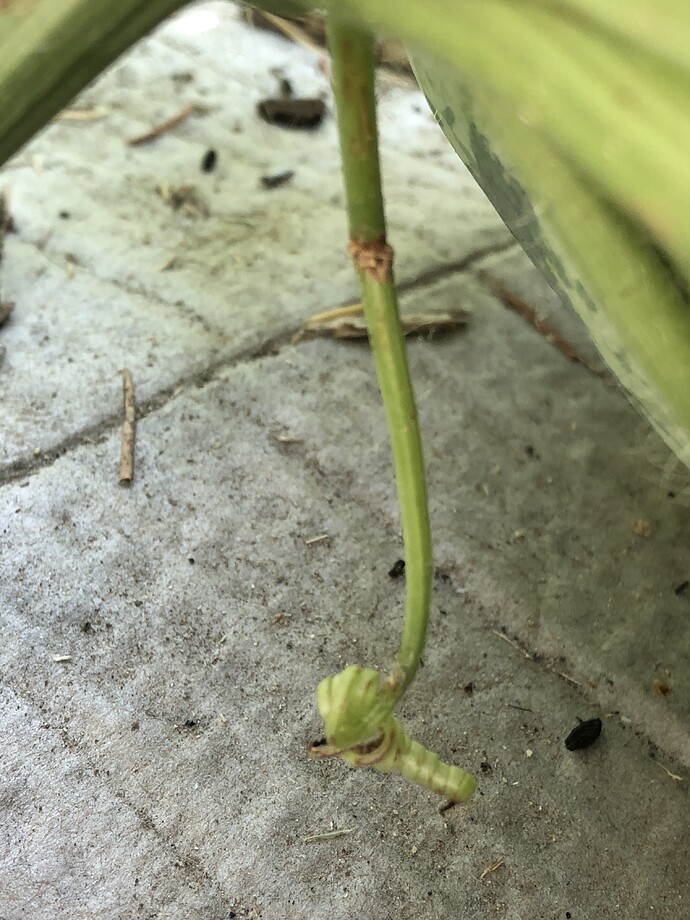These pretty melon pics are making me jealous! Still no melons here; I’m pretty behind this year. But despite a few hiccups—including a larger-than-usual number of fruit abortions and the loss of two vines to some sort of crown rot, which I’ve never had happen before, even during much rainier seasons than this—the vines look relatively healthy and have a decent number of fruit that should make it before cool weather sets in.
Here are some that I’m impatiently awaiting:
And, despite the fact that I said I was planting Strawberry and only Strawberry, I did also plant some Orangeglo. (Why, yes, I am impressionable!  ) I’m also trying a few Leelanau Sweetglo (an Orangeglo/Crimson Sweet cross). They’re patterned like Orangeglo, but are round like CS; they look like they’re going to be icebox-sized.
) I’m also trying a few Leelanau Sweetglo (an Orangeglo/Crimson Sweet cross). They’re patterned like Orangeglo, but are round like CS; they look like they’re going to be icebox-sized.
Some of the Strawberries and Orangeglos are fairly respectable in size, but no giants—so I don’t think I’ll come close to beating my 42-pound personal record… I just hope they make it . . . and they taste good!
Curious thing: it’s mid-August and I’ve not seen a single striped cucumber beetle and only a few spotted cucumber beetles on my cucurbitaceous crops; this is unprecedented in my experience. Anyone else seeing a drop in cuke beetle populations this year?
My hope is that I managed to eliminate much of the local overwintering population by spraying very late into the season last year with a rotation of neem + karanja oil and spinosad. And as very few of my neighbors keep gardens of any extent, my cucurbits should’ve been the principal draw/trap for all the local beetles. Such is my hope, anyway.
It could just be a cyclical thing, though. And I’m sure that if I decide to plant Kajari and/or other C. melo melons again next year (and I really wish I had done so this year, dang it!), the beetles will be sure to blow back in—with bacterial wilt in tow.
One last note: this one regarding @Auburn Bill’s pointy-tipped 'melons. Certain cultivars, for whatever reason (atavism? very particular pollination needs or maybe less attractive flowers than other cultivars, leading to poor pollination?), seem to have a tendency to do this. Strawberry always throws out a few pointy to outright gourd-necked fruit, but none of the other cultivars I’ve grown has ever done this. Here is an extreme example.
Necks are reportedly a common feature of Art Combe’s “Ancient” watermelon, introduced to the seed market by Baker Creek. I’m not sure I buy its origin story, but it’s an interesting melon. Anyone here ever grow it?
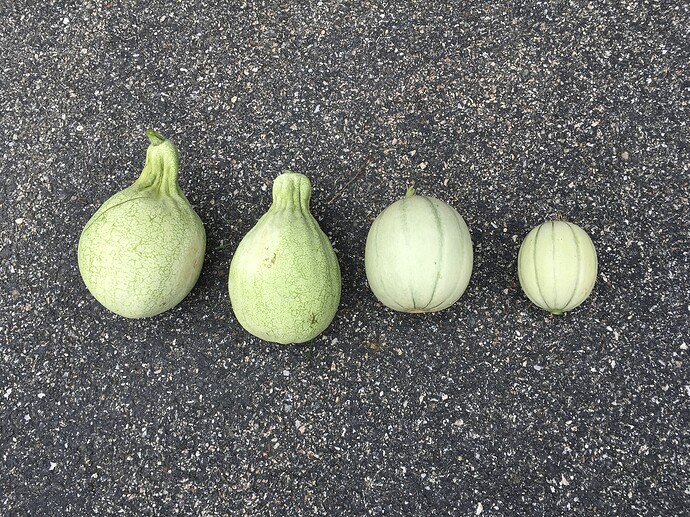
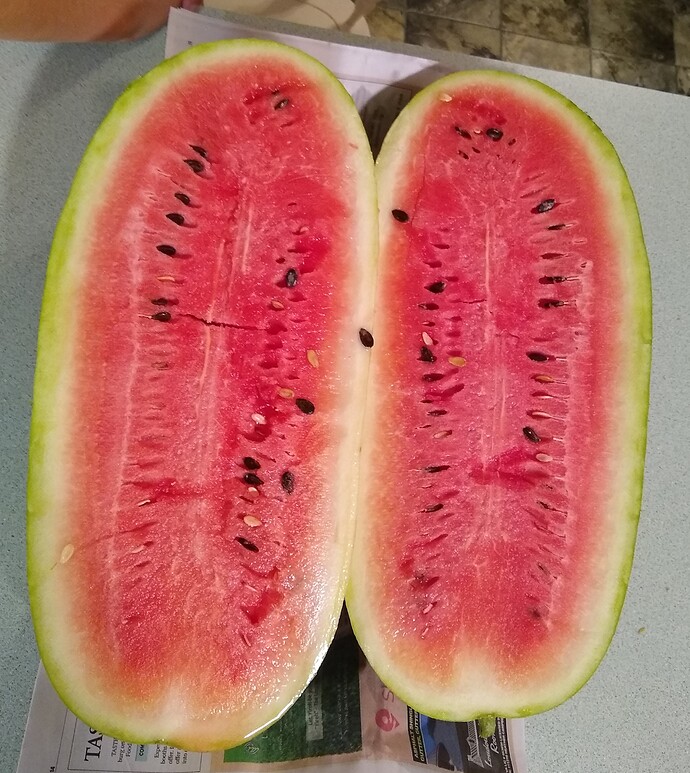
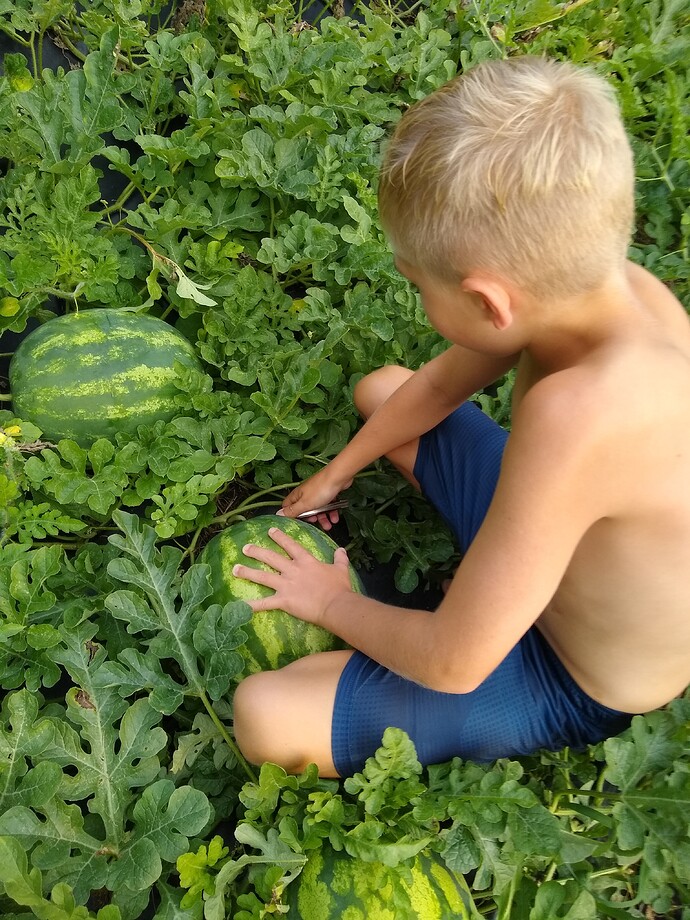

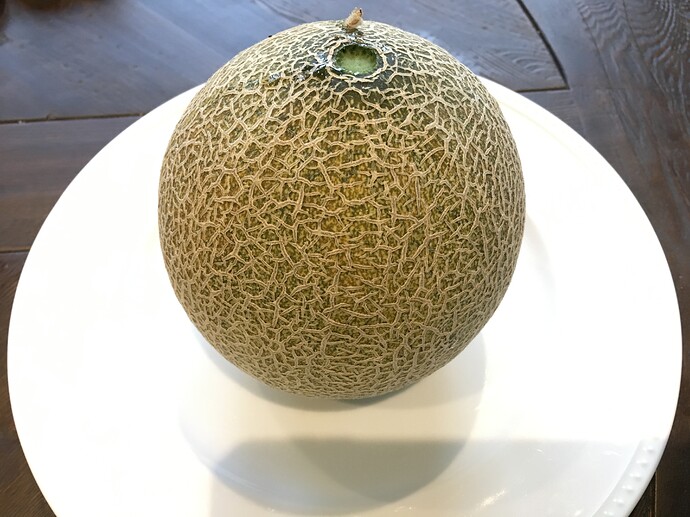
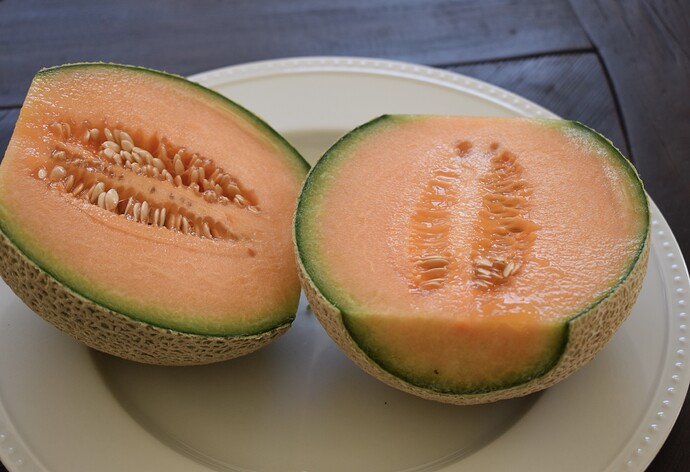
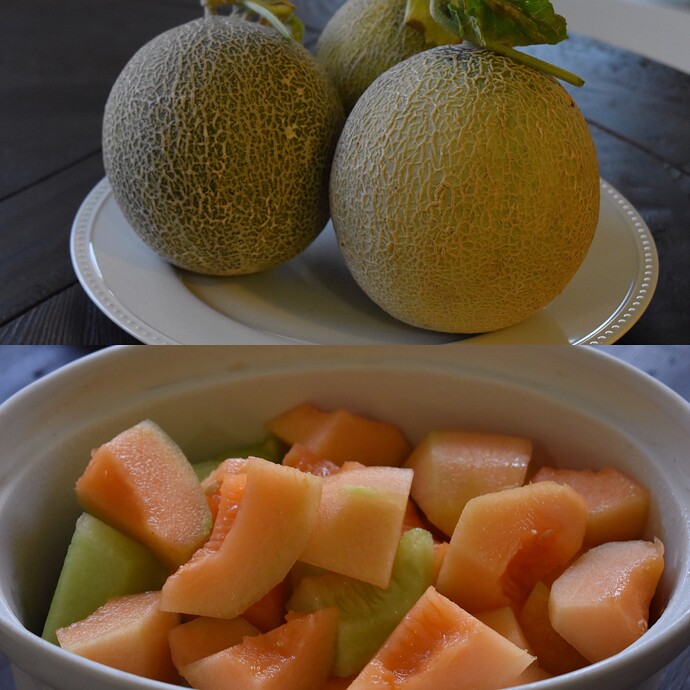
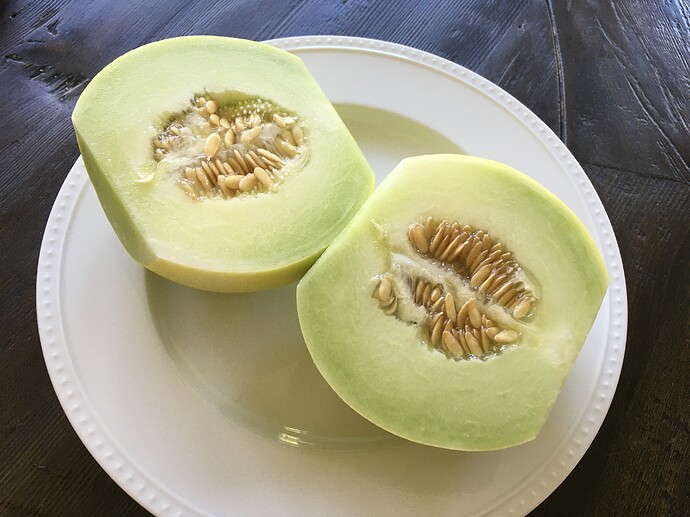
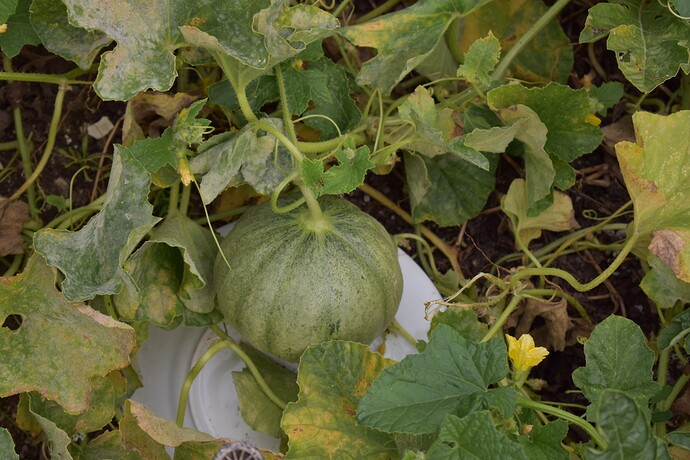

 ) I’m also trying a few Leelanau Sweetglo (an Orangeglo/Crimson Sweet cross). They’re patterned like Orangeglo, but are round like CS; they look like they’re going to be icebox-sized.
) I’m also trying a few Leelanau Sweetglo (an Orangeglo/Crimson Sweet cross). They’re patterned like Orangeglo, but are round like CS; they look like they’re going to be icebox-sized.
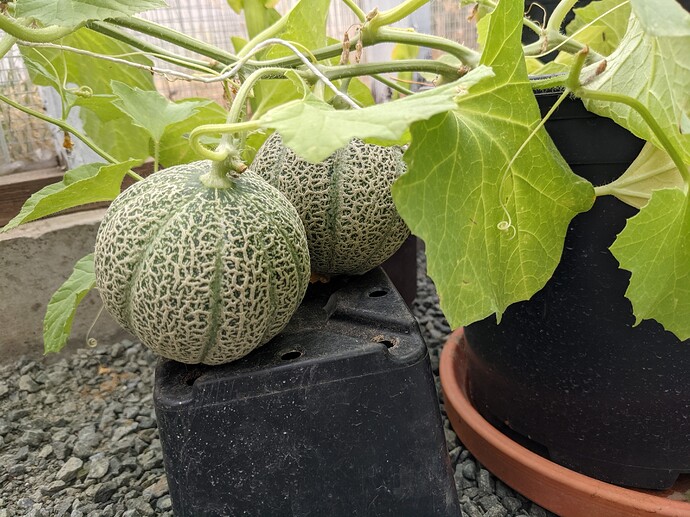
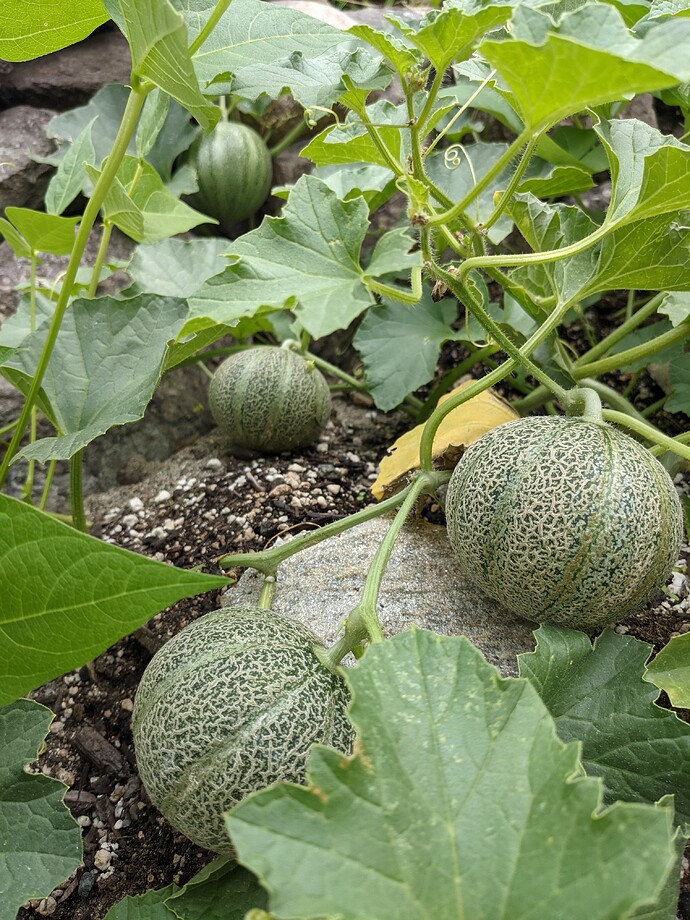

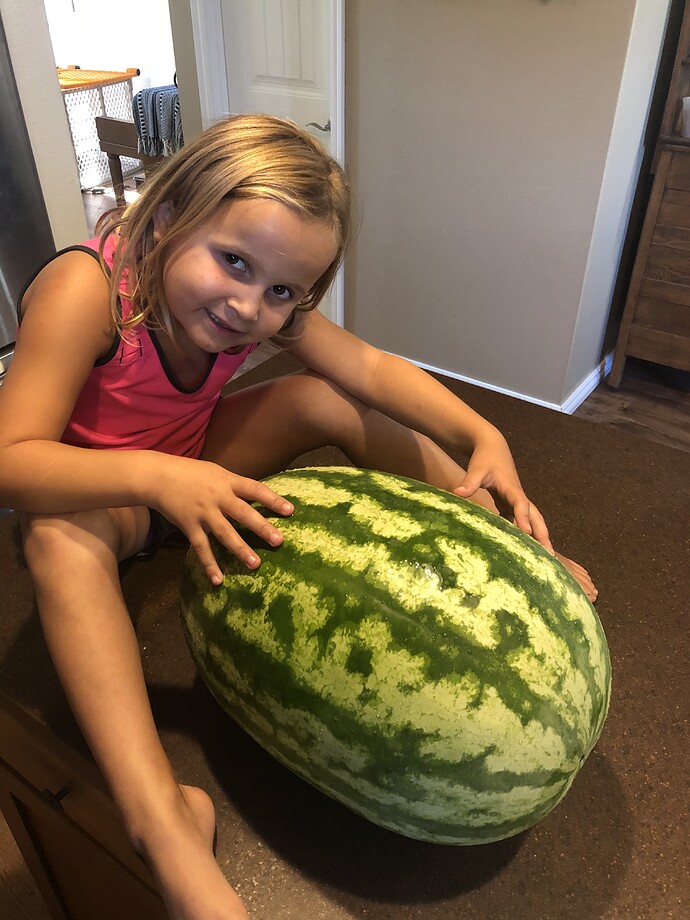
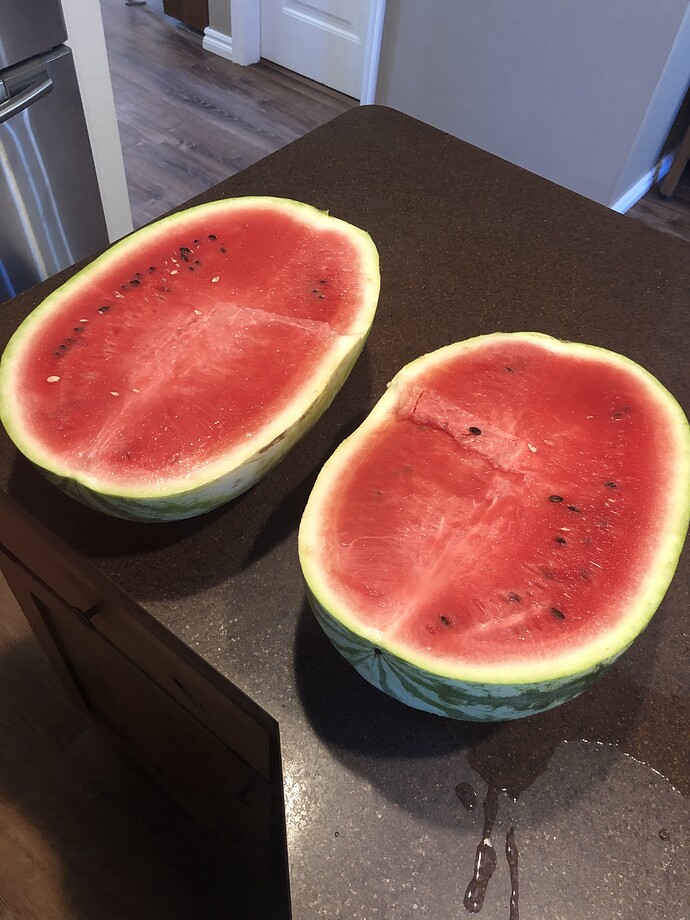
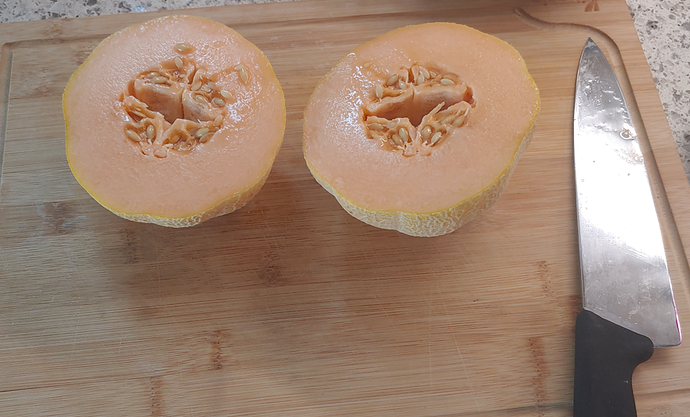
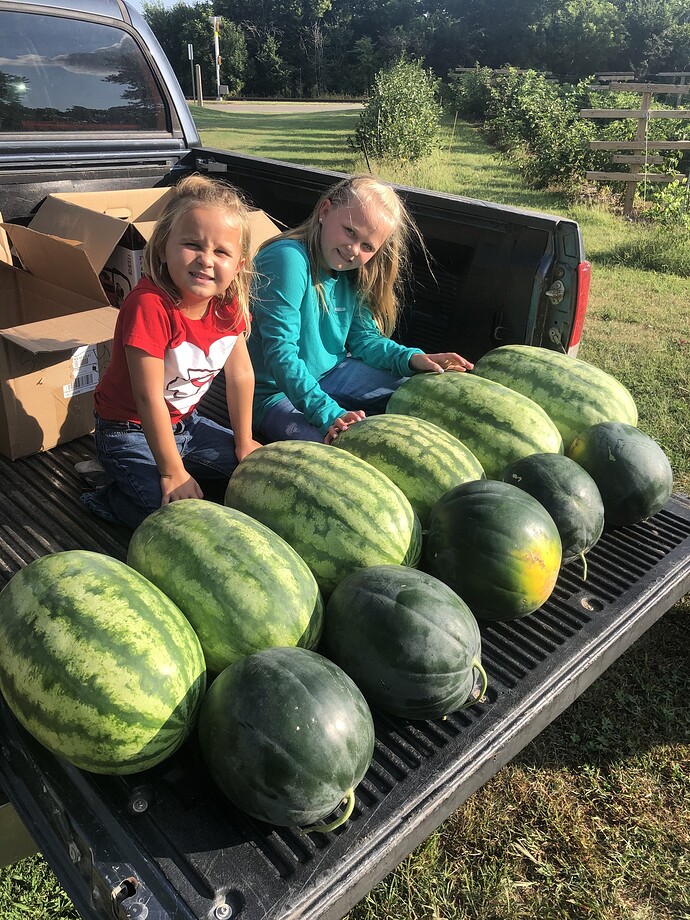
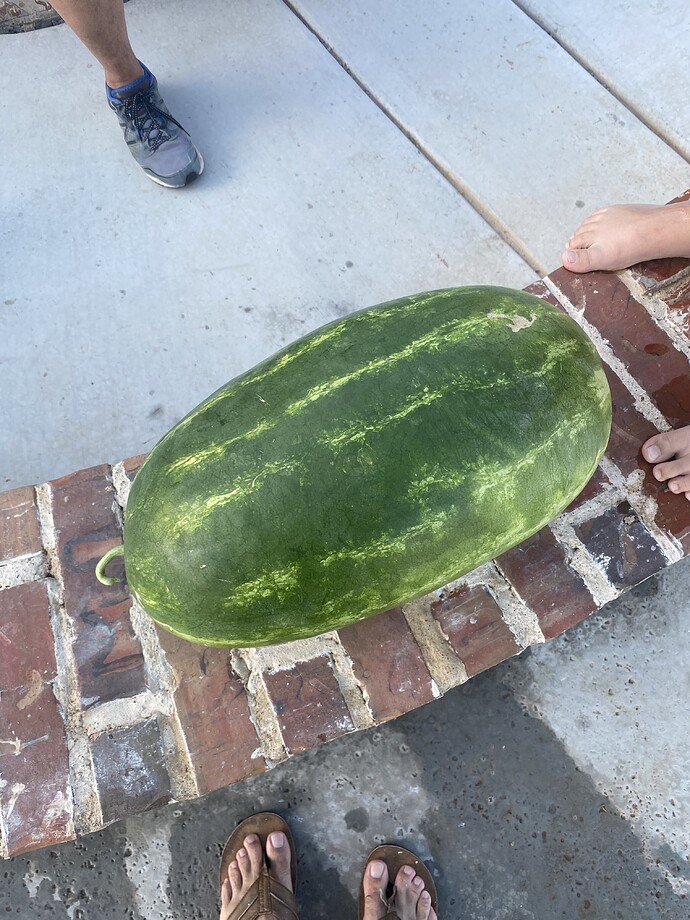


 . . . . but, in most cases, I have found these sound indicators of ripeness.
. . . . but, in most cases, I have found these sound indicators of ripeness.